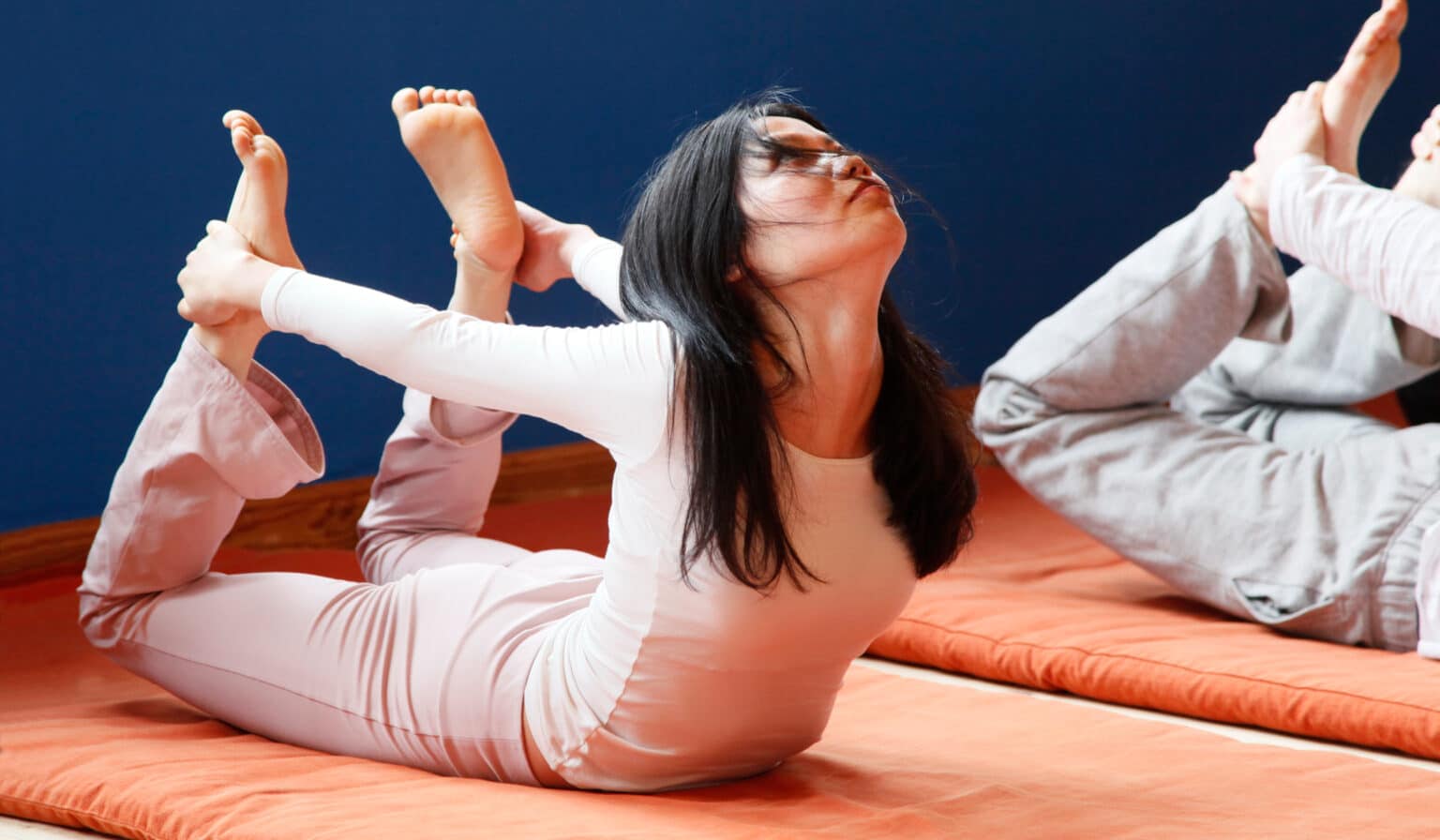
What is Sivananda Yoga? Sivananda Yoga is a traditional form of yoga that emphasizes holistic well-being through a balanced approach. Founded by Swami Sivananda and popularized by his disciple Swami Vishnudevananda, this practice integrates five key principles: proper exercise, proper breathing, proper relaxation, proper diet, and positive thinking with meditation. Why should you care? Because it’s not just about physical postures; it’s a lifestyle that promotes mental clarity, emotional stability, and spiritual growth. Whether you're a beginner or an experienced yogi, Sivananda Yoga offers something valuable for everyone. Ready to dive deeper? Let's explore 40 fascinating facts about this transformative practice!
Key Takeaways:
- Sivananda Yoga, founded by Swami Sivananda, focuses on 5 principles including proper exercise, breathing, relaxation, diet, and positive thinking. It promotes physical, mental, and spiritual well-being through traditional yoga techniques.
- Sivananda Yoga's 12 basic asanas, such as headstand and cobra pose, offer benefits like improved flexibility, strength, and stress reduction. It's a holistic practice that nurtures the body, mind, and spirit.
What is Sivananda Yoga?
Sivananda Yoga is a classical form of yoga that emphasizes physical, mental, and spiritual well-being. Founded by Swami Sivananda and popularized by his disciple Swami Vishnudevananda, this practice integrates traditional yoga techniques with a holistic approach to health.
- Sivananda Yoga was founded by Swami Sivananda in the early 20th century.
- Swami Vishnudevananda, a disciple of Swami Sivananda, spread this yoga style worldwide.
- The practice focuses on five principles: proper exercise, proper breathing, proper relaxation, proper diet, and positive thinking.
- Sivananda Yoga incorporates 12 basic asanas (postures) that are designed to increase strength, flexibility, and balance.
- The practice includes pranayama (breathing exercises) to enhance lung capacity and oxygenate the body.
- Savasana (corpse pose) is a key relaxation technique used to rejuvenate the body and mind.
- A vegetarian diet is recommended to support overall health and spiritual growth.
- Positive thinking and meditation are integral parts of Sivananda Yoga, promoting mental clarity and inner peace.
The History of Sivananda Yoga
Understanding the origins of Sivananda Yoga provides insight into its principles and practices. The history is rich with spiritual teachings and a commitment to holistic health.
- Swami Sivananda was a medical doctor before becoming a spiritual leader.
- He established the Divine Life Society in 1936 to spread his teachings.
- Swami Vishnudevananda was sent to the West in 1957 to share Sivananda Yoga.
- The first Sivananda Yoga Vedanta Center was opened in Montreal, Canada, in 1959.
- Swami Vishnudevananda authored "The Complete Illustrated Book of Yoga," a seminal text on the subject.
- Sivananda Yoga has since grown to include over 60 centers and ashrams worldwide.
- The teachings emphasize universal love and service to humanity.
The Five Points of Yoga
The five points of yoga are the foundation of Sivananda Yoga. These principles guide practitioners toward a balanced and healthy lifestyle.
- Proper Exercise: Asanas are practiced to keep the body flexible and strong.
- Proper Breathing: Pranayama techniques help control the breath and increase energy.
- Proper Relaxation: Savasana is used to relax the body and mind, reducing stress.
- Proper Diet: A vegetarian diet is encouraged to nourish the body and mind.
- Positive Thinking and Meditation: These practices cultivate a peaceful and focused mind.
The 12 Basic Asanas
The 12 basic asanas are central to Sivananda Yoga. Each posture has specific benefits for the body and mind.
- Headstand (Sirsasana): Improves circulation and strengthens the upper body.
- Shoulderstand (Sarvangasana): Stimulates the thyroid and parathyroid glands.
- Plough (Halasana): Stretches the spine and shoulders.
- Fish (Matsyasana): Opens the chest and improves lung capacity.
- Sitting Forward Bend (Paschimottanasana): Stretches the hamstrings and lower back.
- Cobra (Bhujangasana): Strengthens the spine and opens the chest.
- Locust (Salabhasana): Strengthens the back muscles.
- Bow (Dhanurasana): Stretches the entire front of the body.
- Spinal Twist (Ardha Matsyendrasana): Increases spinal flexibility.
- Crow (Kakasana): Improves balance and strengthens the arms.
- Standing Forward Bend (Pada Hastasana): Stretches the hamstrings and calves.
- Triangle (Trikonasana): Strengthens the legs and improves balance.
Benefits of Sivananda Yoga
Practicing Sivananda Yoga offers numerous benefits for physical, mental, and spiritual health. These advantages make it a popular choice for many yoga enthusiasts.
- Improved Flexibility: Regular practice increases flexibility in muscles and joints.
- Enhanced Strength: Asanas build muscle strength and endurance.
- Better Posture: Yoga promotes proper alignment and posture.
- Stress Reduction: Relaxation techniques help reduce stress and anxiety.
- Increased Energy: Pranayama and asanas boost energy levels.
- Mental Clarity: Meditation and positive thinking improve focus and mental clarity.
- Spiritual Growth: The holistic approach fosters spiritual development.
- Community: Sivananda Yoga centers provide a supportive community for practitioners.
Final Thoughts on Sivananda Yoga
Sivananda Yoga offers a holistic approach to well-being, blending physical postures, breathing exercises, relaxation, and meditation. This practice promotes not just physical health but also mental clarity and spiritual growth. Whether you're a beginner or an experienced yogi, Sivananda Yoga provides tools to enhance your life.
By incorporating these practices, you can experience reduced stress, improved flexibility, and a deeper sense of inner peace. The emphasis on a balanced lifestyle, including proper diet and positive thinking, makes it a comprehensive system for overall wellness.
If you're looking to deepen your yoga practice or start a new journey towards better health, Sivananda Yoga is worth exploring. Its time-tested techniques and holistic approach can help you achieve a more balanced and fulfilling life. Give it a try, and see the positive changes unfold.
Frequently Asked Questions
Was this page helpful?
Our commitment to delivering trustworthy and engaging content is at the heart of what we do. Each fact on our site is contributed by real users like you, bringing a wealth of diverse insights and information. To ensure the highest standards of accuracy and reliability, our dedicated editors meticulously review each submission. This process guarantees that the facts we share are not only fascinating but also credible. Trust in our commitment to quality and authenticity as you explore and learn with us.


